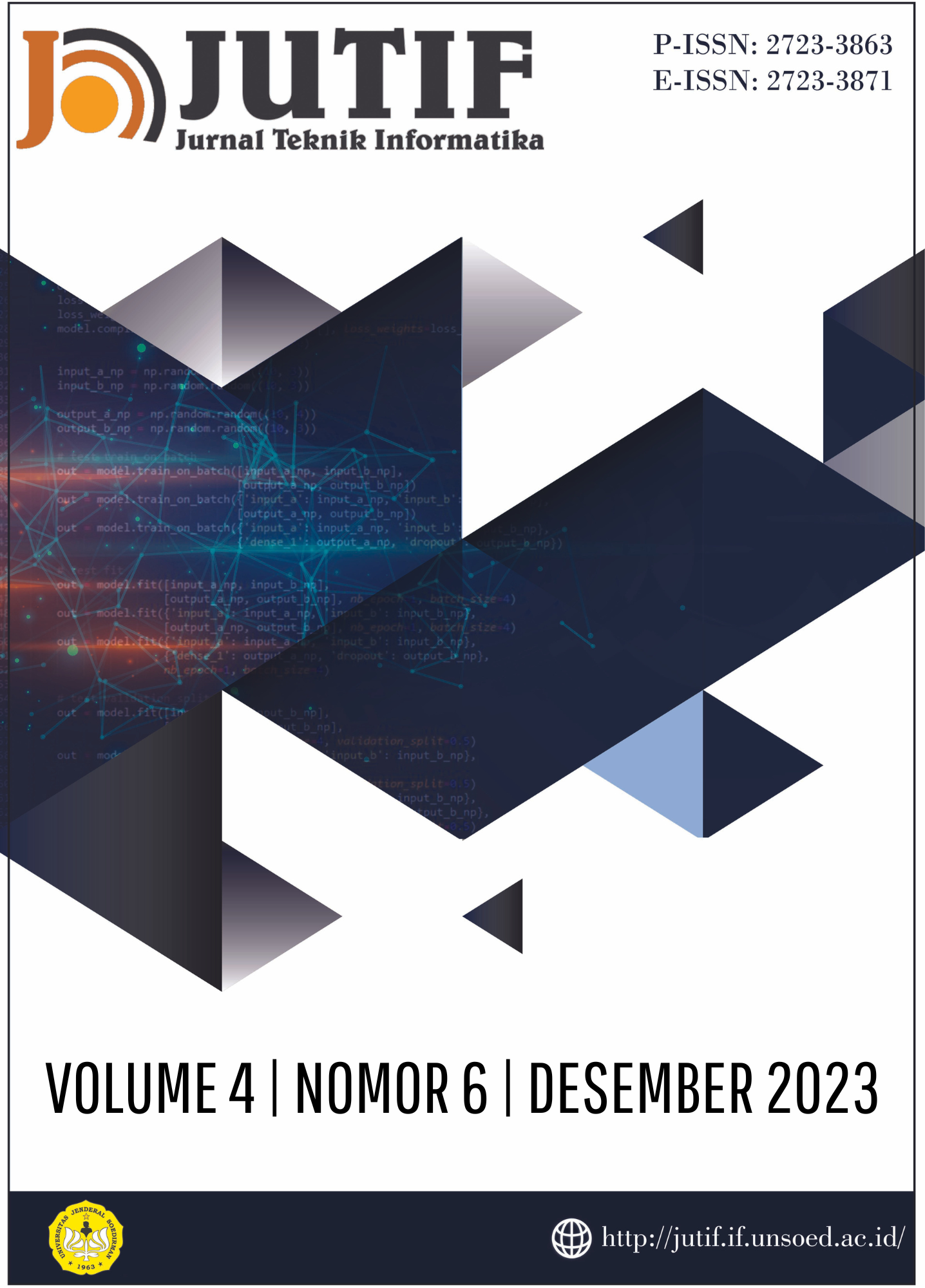AUTOMATIC GIT REPOSITORY DEPLOYER IN UBUNTU USING PYTHON, JENKINS AND CLOUD FIRESTORE AT PT XYZ
DOI:
https://doi.org/10.52436/1.jutif.2023.4.6.1062Keywords:
Cloud Firestore, Deployment, GIT Repository, Jenkins, Python, Research and DevelopmentAbstract
PT XYZ is a retail company using Cloud Computing to support its business operations. The company requires the back-end application deployment process to be done automatically on each server computer. The problem occurs insecure in the process of the back-end application deployed manually causing human error vulnerabilities and inefficient when the version of application change occurs to operate on each server computer takes time as long as the number of server computers that need to be configured. The research aims to design a deployer system that help company to deploy back-end applications on each Ubuntu server computer automatically efficiently and securely. The research method uses Research and Development to create system. The research produces a design and build of an automated deployer system using Jenkins to create data configuration that aim the version of back-end application as target deploy and stored in the Cloud Firestore database. The stored data causing deployer system change version back-end application as stored data using GIT command and provide application to operate as service on each server computer. Operation result of application recorded as data deployment that stored in the Cloud Firestore then Jenkins detect it to store data as deployment log. Based on the results, the deployer system considered is able to operate back-end application automatically according the target version on each server computer as eficient and secure deployment process. This conclusion is supported by the results of the questionnaire, which obtained a 85% percentage and was classified as "Strongly Agree" with the created system.
Downloads
References
T. Xia, S. Bhardwaj, P. Dmitriev, and A. Fabijan, “Safe Velocity: A Practical Guide to Software Deployment at Scale using Controlled Rollout,” Proc. - 2019 IEEE/ACM 41st Int. Conf. Softw. Eng. Softw. Eng. Pract. ICSE-SEIP 2019, pp. 11–20, 2019, doi: 10.1109/ICSE-SEIP.2019.00010.
B. Johnson, Essential Visual Studio 2019. Berkeley: Apress, 2020. doi: 10.1007/978-1-4842-5719-7.
M. Macak, D. Kruzelova, S. Chren, and B. Buhnova, “Using process mining for Git log analysis of projects in a software development course,” Educ. Inf. Technol., vol. 26, no. 5, pp. 5939–5969, 2021, doi: 10.1007/s10639-021-10564-6.
S. D. Riskiono and D. Darwis, “Peran Load Balancing Dalam Meningkatkan Kinerja Web Server Di Lingkungan Cloud,” Krea-TIF, vol. 8, no. 2, p. 1, 2020, doi: 10.32832/kreatif.v8i2.3503.
P. Kirkbride, Basic Linux Terminal Tips and Tricks. New York: Apress, 2020. doi: 10.1007/978-1-4842-6035-7.
A. S. Shitole and I. Priyadarshini, “Understanding Software Development with DevOps,” J. Adv. Softw. Eng. Test., vol. 4, no. 2, pp. 1–3, 2021, doi: 10.5281/zenodo.5118765.
N. Evianti, A. Mulyana Winhandar, and A. Kurniawan, “AUTOMATION PROVISIONING DEV-OPS WEBSITE SERVER MENGGUNAKAN ANSIBLE DAN VAGRANT,” J. Nas. Inform., vol. 2, no. 2, pp. 72–91, 2021, doi: 10.55122/junif.v2i2.334.
Y. F. Aladina, A. Bhawiyuga, R. A. Siregar, and P. H. Trisnawan, “Penerapan Mekanisme Continuous Deployment dalam Pengembangan dan Pembaruan Perangkat Lunak Sistem Benam Berbasis Internet of Things,” J. Teknol. Inf. dan Ilmu Komput., vol. 9, no. 3, p. 647, 2022, doi: 10.25126/jtiik.2022935750.
E. Simanjuntak and N. Surantha, “Multiple time series database on microservice architecture for IoT-based sleep monitoring system,” J. Big Data, vol. 9, no. 1, 2022, doi: 10.1186/s40537-022-00658-4.
A. Aayush, G. Subhash, and C. Tanupriya, “Continuous and Integrated Software Development using DevOps,” in 2018 International Conference on Advances in Computing and Communication Engineering (ICACCE), IEEE, 2018, pp. 290–293. doi: 10.1109/icacce.2018.8458052.
Á. Révész and N. Pataki, “Visualisation of Jenkins Pipelines,” Acta Cybern., vol. 25, no. 2, pp. 877–895, 2021, doi: 10.14232/actacyb.284211.
Sugiyono, Metode Penelitian Kuantitatif, Kualitatif dan R&D. Bandung: Alfabeta, 2010.
D. I. Permatasari et al., “Pengujian Aplikasi menggunakan metode Load Testing dengan Apache JMeter pada Sistem Informasi Pertanian,” J. Sist. dan Teknol. Inf., vol. 8, no. 1, p. 135, 2020, doi: 10.26418/justin.v8i1.34452.
S. Al-Fedaghi, “Validation: Conceptual versus Activity Diagram Approaches,” Int. J. Adv. Comput. Sci. Appl., vol. 12, no. 6, pp. 287–297, 2021, doi: 10.14569/IJACSA.2021.0120632.
V. H. Pranatawijaya, W. Widiatry, R. Priskila, and P. B. A. A. Putra, “Penerapan Skala Likert dan Skala Dikotomi Pada Kuesioner Online,” J. Sains dan Inform., vol. 5, no. 2, pp. 128–137, 2019, doi: 10.34128/jsi.v5i2.185.



























